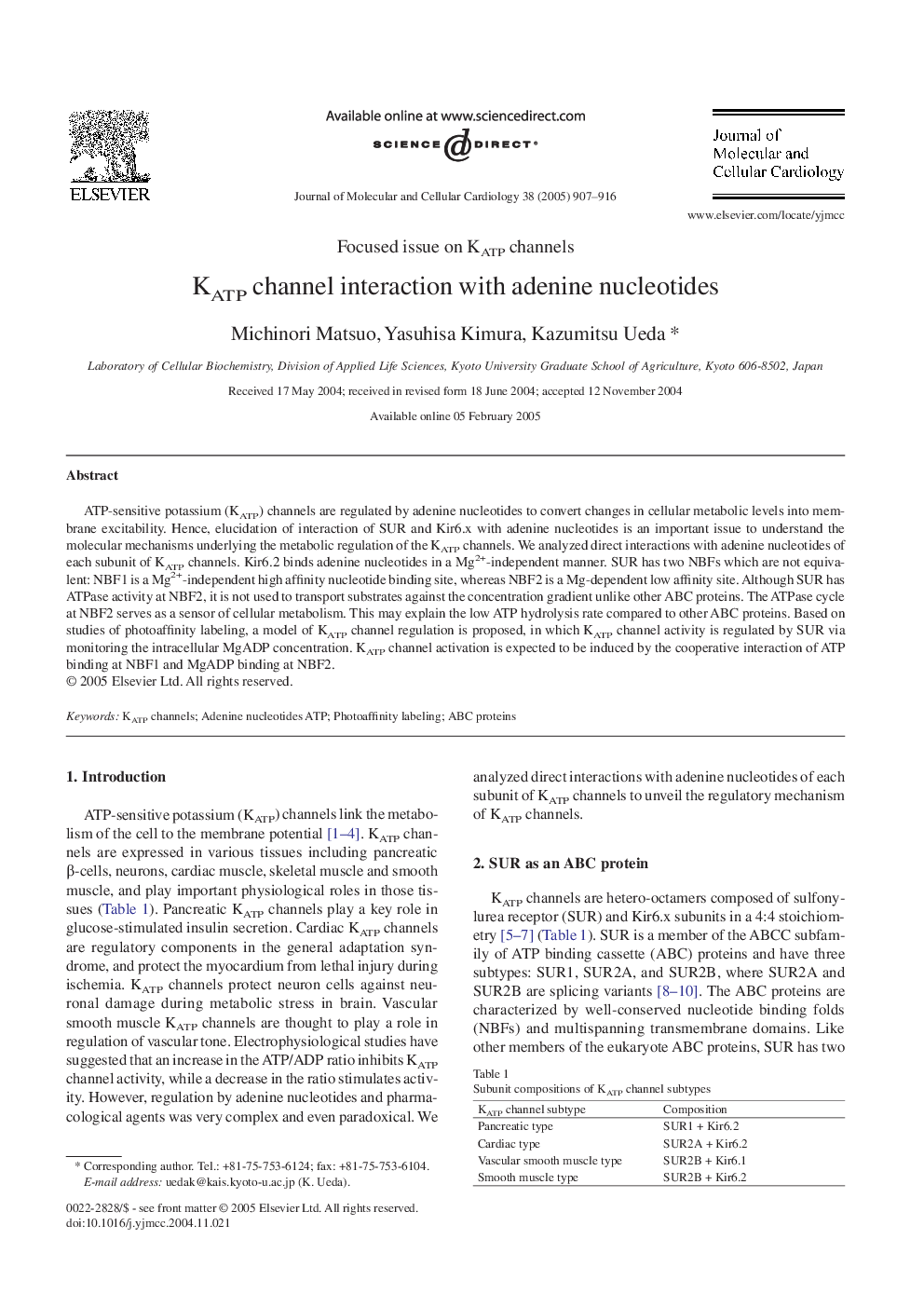| Article ID | Journal | Published Year | Pages | File Type |
|---|---|---|---|---|
| 10954519 | Journal of Molecular and Cellular Cardiology | 2005 | 10 Pages |
Abstract
ATP-sensitive potassium (KATP) channels are regulated by adenine nucleotides to convert changes in cellular metabolic levels into membrane excitability. Hence, elucidation of interaction of SUR and Kir6.x with adenine nucleotides is an important issue to understand the molecular mechanisms underlying the metabolic regulation of the KATP channels. We analyzed direct interactions with adenine nucleotides of each subunit of KATP channels. Kir6.2 binds adenine nucleotides in a Mg2+-independent manner. SUR has two NBFs which are not equivalent: NBF1 is a Mg2+-independent high affinity nucleotide binding site, whereas NBF2 is a Mg-dependent low affinity site. Although SUR has ATPase activity at NBF2, it is not used to transport substrates against the concentration gradient unlike other ABC proteins. The ATPase cycle at NBF2 serves as a sensor of cellular metabolism. This may explain the low ATP hydrolysis rate compared to other ABC proteins. Based on studies of photoaffinity labeling, a model of KATP channel regulation is proposed, in which KATP channel activity is regulated by SUR via monitoring the intracellular MgADP concentration. KATP channel activation is expected to be induced by the cooperative interaction of ATP binding at NBF1 and MgADP binding at NBF2.
Related Topics
Life Sciences
Biochemistry, Genetics and Molecular Biology
Cell Biology
Authors
Michinori Matsuo, Yasuhisa Kimura, Kazumitsu Ueda,
